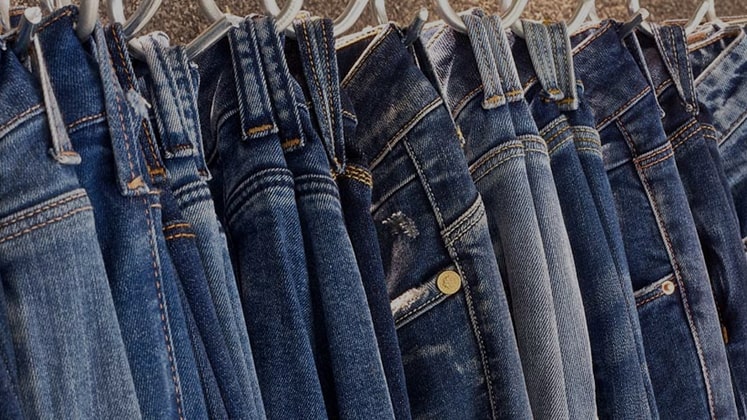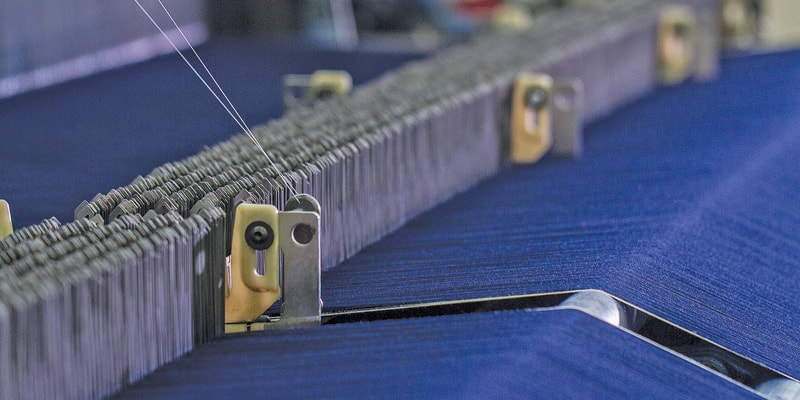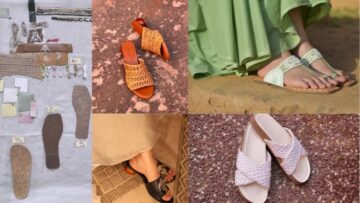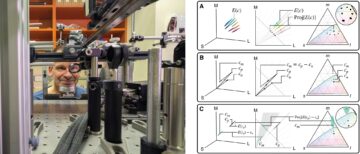The entire world produces approximately 7.5 billion metres of denim fabric from 500 units, and the general expectation is that it will go up to 10.5 billion yards by 2021, which translates to around US $ 64 billion worth of jeans. Although developed regions such as the United States and the Europe are the major consumers, Asia-Pacific is forecast to emerge as the fastest growing market with a CAGR of 9.4 per cent over the analysis period. Feeding this extremely creative denim market, with a wide choice of fabrics, are five key countries – China, Pakistan, India, Turkey, and now Bangladesh.
The world trade in denim fabric averages 6,70,000 tonnes per year, while China is the major exporter of denim; the second largest exporter being Pakistan, followed by Turkey, India, and the United States. A few decades ago US was the largest producer of denim, but now Asian countries have edged it aside. The key success factors for the denim industry growth in the five Asian countries of China, India, Pakistan, Bangladesh and Turkey are different, but equally important. While cotton availability has propelled the Chinese and Indian industry, preferential market access and low wages have been the biggest factors for the growth of Bangladesh along with huge investments in large infrastructure. Significantly, though Italy still controls the design segment, but being too expensive, Turkey has emerged as one of the influential producers of denim fabrics due to its innovation and R&D on finishes and washes; proximity to European markets too has played a major role in the success of Turkey.
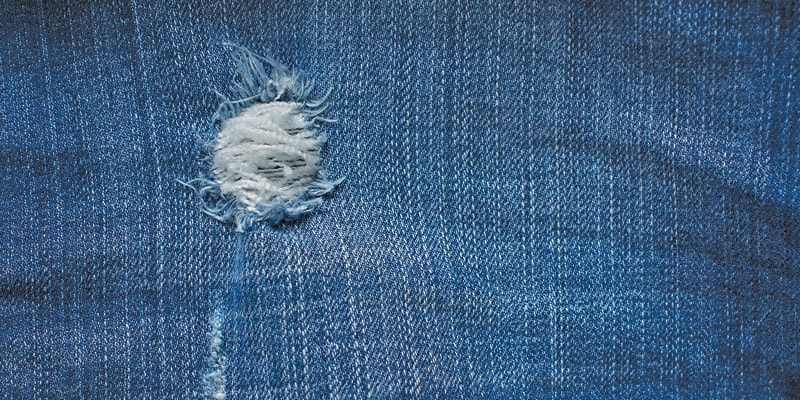 In the selection of denim fabric for different market segments, handle, finish and price are the major differentiating factors. By and large, denim fabric is a very standard product made from cotton fibres having 2/1 right hand twill, indigo dyed warp and grey weft which weighs between 300-500 GSM, the differentiation comes from weaving and washing techniques. Product innovation, a key to denim popularity is centred towards use of ring spun/fancy/specialty yarns and imparting value adding finishes. Of course, innovation always fetches a higher premium, which is why most denim fabric manufacturers are making efforts to innovate. The low-end denim fabrics are made from coarse open end yarns 6s-10s Ne count range, the mid denim fabrics use softer and finer fibres having basic finishes. The high-end fabric apart from using softer, finer fibres are distinguished by use of additional specialized yarns like tencel, model, lycra, etc. and having specialized finishes and coating line.
In the selection of denim fabric for different market segments, handle, finish and price are the major differentiating factors. By and large, denim fabric is a very standard product made from cotton fibres having 2/1 right hand twill, indigo dyed warp and grey weft which weighs between 300-500 GSM, the differentiation comes from weaving and washing techniques. Product innovation, a key to denim popularity is centred towards use of ring spun/fancy/specialty yarns and imparting value adding finishes. Of course, innovation always fetches a higher premium, which is why most denim fabric manufacturers are making efforts to innovate. The low-end denim fabrics are made from coarse open end yarns 6s-10s Ne count range, the mid denim fabrics use softer and finer fibres having basic finishes. The high-end fabric apart from using softer, finer fibres are distinguished by use of additional specialized yarns like tencel, model, lycra, etc. and having specialized finishes and coating line.
Vietnam last year exported 19 million denim jeans to the US and 6 million jeans to EU, whereas Bangladesh exported 68 million and 178 million pieces, respectively; a whopping four times more. In comparison, India exported just 10.4 million jeans between the US and EU last year.
The premium segment is innovation all the way, with unique designer inputs and availability in small niche quantities. The high-end denim also use ring spun yarns rather than open-end yarns giving rich appeal. On a global level, Turkey is known for its premium products; while Bangladesh and Pakistan are positioned for their value products, and India is positioned in mid to premium segment. China has traditionally been known for large volumes of basic fabric.
EU imported 540 mn denim jeans in the year 2015 at a total value of US $ 5.3 bn
| Denim Jeans imports by EU countries from top 8 exporting nations in 2015 | ||
| Volume in million pieces | Value in million US $ | |
| 177.88 | Bangladesh | 1340.84 |
| 100.55 | Turkey | 1103.71 |
| 86.38 | Pakistan | 856.59 |
| 74.46 | China | 771.24 |
| 6.32 | India | 66.22 |
| 6.09 | Vietnam | 58.37 |
| 2.72 | Sri Lanka | 32.10 |
| 1.58 | Mexico | 20.60 |
| EU imported 540 mn denim jeans in the year 2015 at a total value of US $ 5.3 bn | ||
China cutting production of denim fabric
China is the dominant player of denim and its growth is going to stagnate in the time to come. As of now, China manufactures close to 2.0 to 2.5 billion metres of denim annually, which is much below the figure of 2007. In a well thought-out and deliberate shift, the country has been cutting down on their production of denim fabric, preferring to concentrate on high-end textiles and jeans production, as they are strategically moving up the value chain. One of the major reasons, besides rising cost of production due to increasing wages and infrastructure cost, and which has diverted China away from denim fabric is the major environment issues that have hit the Chinese industry in the past few years. Brands like Armani, Calvin Klein, Marks & Spencer and Zara are being linked to devastating water pollution in the Chinese textile industry. Though the Chinese still rule the basic market with huge capacities in rope dyeing at competitive rates, the country is fast losing out on the denim market, despite capacities. Guangdong city is the country’s largest denim producer and accounts for 45 per cent of 1.20 billion metres of the total production and Xintang is famous as the ‘jeans capital of the world’, producing 260 million pairs of jeans a year, equivalent to 40 per cent of jeans sold in US.
Turkey taking advantage of proximity for fashion
There are around five major fully integrated factories in Turkey which supply denim fabric to all major international brands. It is estimated that Turkey’s total denim production capacity is around 450-500 million metres annually, accounting for 9 per cent of the world market share, while in fabric exports, the country’s share is 5 per cent. The total exports of denim textile and apparel exports are worth US $ 4 billion.
Bangladesh is a cheaper production destination by 22% against Vietnam. While the UVR of Vietnam is much higher at US $ 8.16 as against US $ 6.30 from Bangladesh, while the Indian UVR is higher at US $ 8.90. China’s UVR is US $ 7.30 and Turkey has the highest UVR of US $ 14.75.
Turkey has strategically positioned itself as a high-end premium supplier of denim fabric and denim garments. The big five of Turkey – ISKO, Calik Denim, Orta Anadolu, Bossa and Kipas – are important players in the development of good quality fabrics and many high-end brands are currently doing bulk productions in the country. The capability to do smaller runs in washes is defined by the technology used for dyeing, and rope dyeing is the traditional method of volume dyeing, commonly used in China; it is not possible to do smaller runs with rope dyeing. Turkey has bigger capacities in slasher dyeing which is associated with smaller runs and greater flexibility to allow experiment with washes, aiding more innovation.
| Denim Jeans imports by US from top 8 exports and manufacturing destinations 2015 | ||
| Volume in million pieces | Value in million US $ | |
| 135.63 | China | 992.81 |
| 110.03 | Mexico | 955.37 |
| 68.33 | Bangladesh | 430.72 |
| 22.77 | Pakistan | 178.86 |
| 19.06 | Vietnam | 155.61 |
| 7.42 | Sri Lanka | 60.14 |
| 4.37 | India | 38.68 |
| 1.60 | Turkey | 25.67 |
| US imported 480 mn denim jeans in the year 2015 at a total value of US $ 3.7 bn | ||
Brands want the products really fast and as of today, Turkey is capable to supply jeans in 2-3 weeks provided fabric is in stock. There are few companies who undertake to do ‘Just in Time’ orders, also for Europe as well as VMI (Vendor Managed Inventory) for few brands. However, the constraint of higher garment prices makes it unaffordable sometimes for some brands. While you can get a bulk of basic jeans in China and Bangladesh for as low as US $ 4, Turkey jeans prices can hike from US $ 10 and above depending on quality and lead time.
Denim, a growth segment for Pakistan textile industry
Pakistan has evolved as a key denim player and its products are recently being compared to those coming from Turkey on quality and wash parameters, but at much lower cost; primarily it is due to Pakistan being a major cotton production country. There are about 40 major players in the denim industry of Pakistan. Some of them, like Artistic Fabric Mills, Pak Denim Limited, Al-Ameen Denim Mills Limited, SM Denim Mills Ltd., Denim International, Classic Denim, Rajby Industries, Soorty, etc. are producing about 50 million square metres of finished denim fabrics per month. All companies are using the rope dyeing technique; and SM Denim is the first and only manufacturer of denim fabric using slasher technology in the country.
| Denim Companies Strength | |||||||
| Bangladesh | India | Pakistan | China | ||||
| Company | Production capacity – Million Metres/Annum | Company | Production capacity – Million Metres/Annum | Company | Production capacity – Million Metres/Annum | Company | Production capacity – Million Metres/Annum |
| Envoy Textiles | 44 | Arvind Ltd. | 120 | Artistic Milliners | 48 | Weiqiao Textile Company Limited | 73 |
| Ha-Meem Group | 42 | Aarve Denims & Export Ltd. | 85 | Siddiqsons Denim Mills Ltd. | 40 | Xingtai Blue Diamond Dyeing and Weaving Co.Ltd. | 40 |
| Partex Denim | 41.5 | Nandan Exim | 70 | Artistic Fabric Mill Ltd. | 40 | Haining Bafang Weaving Co. Ltd. | 25 |
| Nice Denim Mills Ltd. | 40 | Kanchan Group | 60 | Soorty Textiles | 39 | Central Denim | 24.1 |
| Jamuna Denims Ltd. | 25 | Etco ` Pvt. Ltd. | 50 | Hantex Textile Mill | 38 | Prosperity Textile (HK) Ltd. | 18.3 |
| Pacific Denims Ltd. | 22 | Raymond Uco Denim Ltd. | 47 | Kassim Textile Mills Ltd. | 36 | Ye Tai Weaving Factory Ltd. | NA |
| Desh Denim Mills Ltd. | 21.5 | Bhaskar Industries Ltd. | 42 | Naveena Export Ltd. | 33 | China Denim | NA |
| Hamid Fabrics | 21 | Suryalakshmi Cotton Mills Ltd. | 40 | Azgard Nine Ltd. | 32 | Lanvan | NA |
| Nassa-Taipei Denims Ltd. | 21 | Shri Lakshmi Cotsyn Ltd. | 40 | Artistic Denim | 31 | Mou Fung Ltd | NA |
| Shasha Denim | 20 | Oswal Denims | 40 | Mekotex | 27 | Black Pony | NA |
International Cotton Advisory Committee (ICAC) has recently stated that Pakistan is the second largest exporter of denim in the world after China. Export of cotton denim fabrics from Pakistan increased from 320 million square metres, worth US $ 334 million in 2011-12 to 333 million square metres worth US $ 458 million in 2013-14, showing an increase of 18.5 per cent in terms of value.
India positions itself as second largest producer of denim fabric
India will continue to grow not only on its strength of cotton and 28 organized mills, but also because of its hundreds of small mills in the unorganised segment. The denim industry has been growing at a consistent rate of 10-12 per cent over the last decade and is expected to grow at similar compounded rates over the next several years. With companies like Arvind, Malwa, KG Denim, Bhaskar, and Nandan constantly upgrading; the current installed denim fabric capacity in the country is about 1,100 million metres per annum. The big mills in India have been using rope dyeing technology, while the recent investments are now in slasher technology, placing India at an enviable position to offer both big and small runs.
Bangladesh is exporting US $ 1.3 billion worth of denim to EU compared to only US $ 59 million worth of denim by Vietnam… Even in the exports to the US, Bangladesh scores over Vietnam by three-and-a-half time by value which is US $ 450 million worth of denim jeans against only US $ 155 million by Vietnam.
India today has a competitive edge in denim fabric manufacturing due to availability of raw cotton and the right technology and technical expertise. The typical positioning of India in denim fabrics has made it to face competition at both extreme ends. In value products, it faces competition from Bangladesh and Pakistan where it is really challenging to match the price points offered by the manufacturers in these countries. In premium and designer category, it faces stiff competition from Turkey.
Nearly 75 per cent of the denim fabrics produced in India is used domestically, while the remaining is being exported to countries like Bangladesh, Turkey, South America and several African countries; a mere 5 per cent of total world share in exports.
Total exports from Bangladesh to four major markets – US, EU (25 nations), Canada and Japan – is worth US $ 2.2 billion whereas Vietnam does only half a billion… Lot of catching up to be done by Vietnam.
Bangladesh, an emerging force in denim
Over the last decade, Bangladesh has emerged as a force in both denim garment and fabric manufacturing. About 5 years ago the total denim fabric capacity of the country was just around 180 million metres per annum, while today according to latest estimates it is over 350 million metres per annum, increasing almost two-fold in the capacity. Yet, according to research agency BRAC EPL Research, shortfalls in denim requirement of 40 per cent still remains and this shortfall is being met by mills mostly in China, India and Pakistan.
The country has about 20 very good mills including names like Beximco, Shasha, Partex, Nassa, Jamuna, Square Denim, which are producing denim at par to China, Pakistan and India in terms of quality as now every mill is investing hugely on state-of-the-art imported machineries especially on the weaving and processing side. Interestingly, the 20 big companies into the business of denim fabrics today started their productions between 2004 and 2006.
The emerging vertical integration in denim segment has also supported the growth of Bangladesh along the value chain. In fact, now every mill is investing hugely on state-of-the-art imported machineries, especially on processing side allowing huge variation in terms of new weaves and finishes. Majorly the companies are selling their denim fabric locally or for captive consumption. In the last decade, Bangladesh has grown both in business share and new product diversification rapidly, producing a lot of sustainable products in denim. Partex Denim has recently introduced selvedge denim, which is a clear indication that Bangladesh is now at par to any denim producer in the world.

